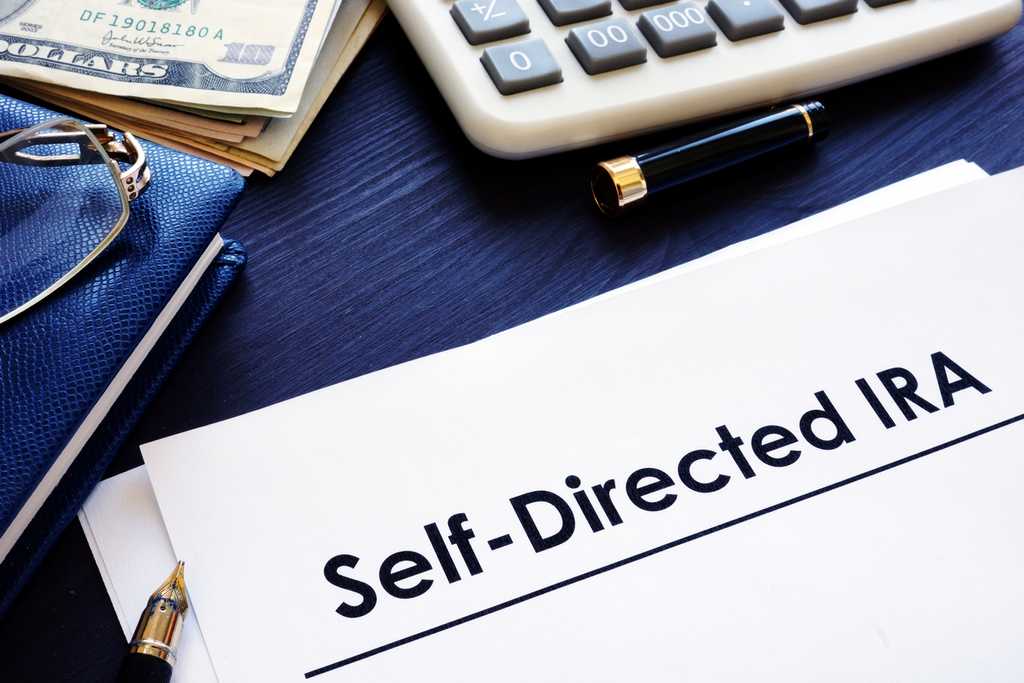One of the keys to successful investing is diversification. With a Self-Directed IRA, investors can invest in a variety of assets beyond the standard stocks, bonds, and commodities that make up most portfolios. These accounts follow the same IRA rules, but they enable investors to invest in non-traditional assets that traditional brokerages typically aren't set up to handle. In this article, we'll discuss what a Self-Directed IRA is, the rules that apply, and how to set one up.
What is a Self-Directed IRA?
A Self-Directed IRA (SDIRA) is a variation of the Traditional IRA or Roth IRA where an investor can hold non-traditional assets. Instead of being limited to stocks, bonds, mutual funds, ETFs, and other common assets, SDIRAs can invest in alternative investments, such as rental properties, partnerships, tax liens, and other unique assets. Many of these assets tend to be illiquid and are usually not traded on a public exchange.
Self-Directed IRA Rules and Regulations
While a Self-Directed IRA (SDIRA) provides greater flexibility in the types of assets that you can invest in, there are more rules that control how the account is used. Just like a Traditional IRA or Roth IRA, every SDIRA must also be administered by a custodian or a trustee. There are numerous companies that specialize in helping investors manage the SDIRA, such as Equity Trust, uDirect IRA, and IRA Financial.
Here are a few of the rules that you need to know about when considering an SDIRA:
- Prohibited assets. Your SDIRA may not purchase or invest in life insurance, collectibles, or S Corporations.
- May not commingle assets with its owner. The SDIRA may not commingle its assets with the owner of the account or any other related parties, known as disqualified persons.
- Disqualified persons. These people include the account owner, a member of their family, an entity that is 50% or more owned by a disqualified person, or an officer, director, or 10% or more shareholder of a disqualified entity.
- Prohibited transactions. The sale or lease of property, lending money, furnishing goods and services, or use of assets between the SDIRA and a disqualified person. Additionally, a disqualified person may not receive benefits from a third party engaged in a transaction with the SDIRA.
How to Set Up a Self-Directed IRA
To set up a Self-Directed IRA (SDIRA), the first step is to find a company that specializes in SDIRAs because most brokerage firms do not handle them. These companies are known as custodians and there are many that offer these services, including Equity Trust, IRA Financial Group, and uDirect IRA. Depending upon what type of assets you want to hold in your SDIRA, it may benefit you to work with a firm that specializes in those assets.
Once your SDIRA has been created, you'll transfer assets from your existing retirement account into the SDIRA to fund it. Then, the custodian will handle the process of investing those funds into the asset you wish to purchase.
Depending upon the type of account created and custodian selected, future retirement contributions may be able to made into the account according to annual contribution limits.
How is a Self-Directed IRA Taxed?
For tax purposes, Self-Directed IRAs (SDIRAs) follow the same rules as the retirement accounts that hold them. All of the capital gains and dividends grow tax-deferred, which means that you don't owe any taxes as long as you don't withdraw any money. If your SDIRA is part of a Traditional IRA, you will owe taxes when making withdrawals. By comparison, if it is within a Roth IRA, all of your withdrawals are tax-free when you reach 59 1/2 years old.
What are the Advantages?
Investors are often looking for higher returns and greater diversification. Investing with a Self-Directed IRA (SDIRA) allows many investors to meet one or both of those goals. Investors with unique knowledge or expertise can use that advantage to buy and sell assets for greater returns within their SDIRA.
Some investors use SDIRAs as a complement to their stock and bond portfolio. The investments within the SDIRA allow them to diversify their portfolio into non-correlated assets that aren't influenced by the daily ups and downs of the market. This means that the value of their non-traditional assets moves differently than traditional stocks, bonds, and other publicly traded investments.
What are the Risks?
There are many rules to follow when investing through an SDIRA. If you break the prohibited transaction rules, there is an immediate 15% penalty on the transaction amount. If it is not promptly cleared up within the same tax year, it is possible that your entire IRA account could become disqualified and you may incur penalties of up to 100%. This could make your entire account taxable, which could have disastrous effects on your current tax returns and future retirement.
Beyond the risks associated with following the rules, the non-traditional assets themselves also add on another layer of risk. Since these assets are typically not publicly traded, the valuations and financial reporting may not be as accurate or timely as a traditional investment, like a stock or mutual fund. This increases the risk that you may overpay when buying or sell below its true value. Additionally, with less independent oversight by the Securities and Exchange Commission (SEC), the format, frequency, or timeliness of financial disclosures could be inadequate for you to make decisions.
Because most of these non-traditional assets are not publicly traded, it may be more difficult to sell the asset when you need cash. Some assets provide limited trading windows, while others have a longer sales process. For example, selling a rental property held in an SDIRA may take months, depending on the local real estate market.
While a traditional brokerage firm may offer investment advice, custodians cannot offer financial advice. This means that investors are responsible for locating and evaluating every aspect of the investments they may make within their SDIRA. For both novice and experienced investors, the combination of a lack of an advisor and investing in non-traditional assets can significantly increase the risks to one's portfolio.
Bottom line
Self-Directed IRAs (SDIRAs) allow investors to diversify their portfolios and invest in non-traditional assets. While there are additional rules that govern what transactions are allowed, the rewards can be worth it for investors who use their expertise to maximize their returns. Traditional brokerages typically do not offer SDIRAs, so you'll need to open your SDIRA account with a qualified IRA custodian. These custodians handle the paperwork and reporting for you, but they do not offer any advice, so SDIRAs are not recommended for investors who need guidance on picking investments.
FAQs
Can I set up a Self-Directed IRA Myself?
Yes, you can set up a Self-Directed IRA (SDIRA) by yourself, but you must involve a qualified IRA custodian to manage your SDIRA assets.
What Banks Offer Self-Directed IRAs?
Most of the banks that are popular for deposit accounts, lending, and investing do not offer Self-Directed IRAs (SDIRAs). However, there are a handful of financial services firms that do offer SDIRAs, including Equity Trust, IRA Financial Group, and uDirect IRA.
Is a Self-Directed IRA a Good Idea?
A Self-Directed IRA can be a good idea for investors who want to invest in non-traditional retirement account assets. In order to make it work, you must be able to follow the rules and work with a custodian who will ensure compliance. The penalties for even simple mistakes can be disastrous and lead to significant tax penalties.
Can I Move my 401(k) to a Self-Directed IRA?
Most employers do not allow employees to move 401(k) assets out of the plan while they are still employed with the company. Once they have left the company, they can rollover the 401(k) into an IRA and create a Self-Directed IRA (SDIRA).
If the employer allows it, earnings on a Traditional 401(k) and contributions to a Roth 401(k) can be moved into an SDIRA. Once an employee turns 59 1/2, they can move their Traditional 401(k) contributions as well.

